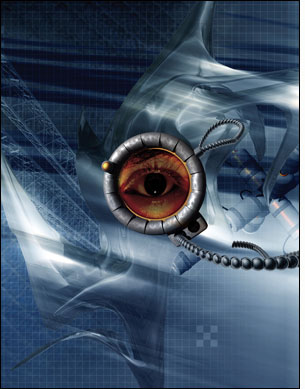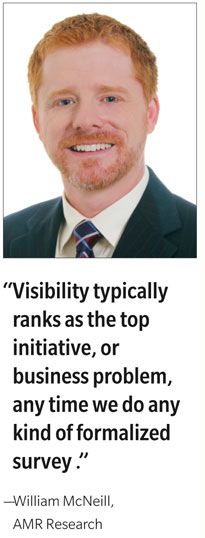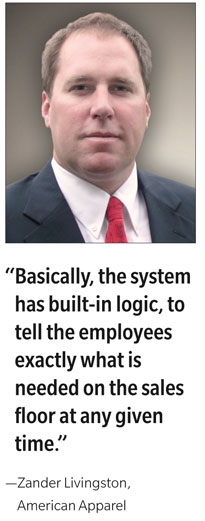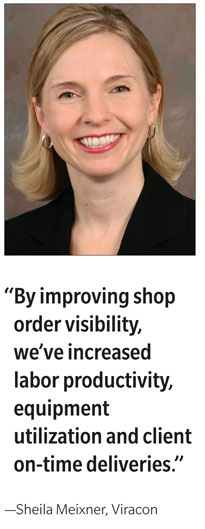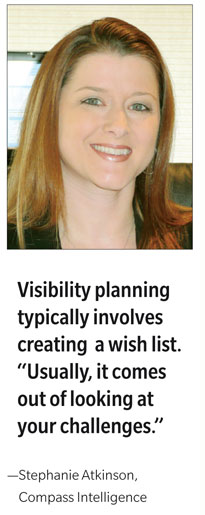Feb 01, 2010The dawn of the 21st century's second decade marks an evolution in radio frequency identification technologies and practices. RFID adopters in diverse fields, including health care, manufacturing, retail and transportation, are moving beyond basic pallet, case and item tracking. Many are tapping into RFID's ability to provide meaningful, actionable insight into asset and inventory management, customer service, distribution, employee productivity, sales and a myriad of other critical business activities. RFID's new age can be described with a single word: visibility.
"Visibility today has taken on a much more focused meaning when it comes to RFID," says Russ Klein, emerging technology research director at Aberdeen Group. It gives RFID adopters the ability to obtain meaningful answers to complex business questions. "It's much more than 'Where is my stuff, where has it been, who has touched it and has it been handled properly?'" he says. "It's now: 'Can I improve the efficiency of my processes, can I predict the bottlenecks or, better yet, can I predict demand based on the data I'm collecting?'" An RFID deployment engineered for visibility, he says, allows such questions to be answered "at every level of the organization, from the line of business up to the CEO."
Awareness of RFID's visibility potential is now widespread, says William McNeill, an analyst at AMR Research. "Visibility typically ranks as the top initiative, or business problem, any time we do any kind of formalized survey," he notes. "Even when we do more informal research...visibility always ranks at the top."
The Time Is Ripe
Vendors and other RFID proponents have long touted the technology's ability to help enterprises monitor key business trends, spot potential process improvements, uncover sales opportunities, and stamp out supply-chain and other inefficiencies. Yet many adopters have been disappointed to discover that their real-world RFID systems didn't live up to providers' inflated promises.
Today, RFID solutions are finally catching up with the technology's potential. Multiple factors—including better hardware, software and deployment strategies—are converging to bring RFID-driven visibility into the business mainstream. Solution providers are also integrating RFID with other automatic-identification and data-capture technologies to design systems that can provide the most business benefits.
"The technology itself is now mature enough to address the use cases that have been identified," Klein says. "There are tags for every possible application, the infrastructure exists and the data warehouse is capable of absorbing the information [collected]."
Tags can store more data than earlier models, for example, giving enterprises access to a greater amount of useful information. "Before, people were expecting to have an entire product's history on an RFID tag, and it was impossible," McNeill says, "so they were let down."
Beyond the technology itself, RFID solution providers are maturing and improving, positioning themselves to meet the visibility needs of specific customers, says Michael Liard, RFID program director at ABI Research. "Each user [sector] is inherently unique and brings its own set of requirements," Liard says. "When you start talking about visibility, deployments and application scenarios change as you go from retail to transportation to manufacturing."
To address end users with specific needs, visibility solution providers are carving market niches. "On the vendor side, you absolutely have vendors targeting different verticals and starting to specialize in particular vertical markets...such as asset management within aerospace and defense," Liard says. "Meanwhile, others are targeting the retail category with their hardware, their software and their systems integration total solutions."
Most visibility solutions are closed-loop applications. The automotive industry, for example, employs RFID-generated visibility to improve internal production processes and quality control. And luxury car dealers say RFID visibility provides information that lets them enhance customer service.
But increasingly, enterprises are recognizing the need for standards to provide visibility into open supply chains to improve efficiencies. Today, standards development is moving forward in many industries, such as automotive, energy, entertainment, financial services and logistics. While a global approach to visibility promises rewards in the near future, here's how some companies and organizations are already reaping benefits from visibility.
Eye on Assets
Enterprises that manage high-value assets, such as hospitals, the military, public-safety agencies and transportation carriers, are on the RFID visibility forefront. These early adopters rely on the technology to provide not only location data for expensive equipment but insight to support life-cycle management, preventive maintenance and other essential tasks that can enhance business productivity and save money.
"One of the really wonderful things about RFID when it's linked to business intelligence and event monitoring is that you get to see what's actually happening, and you can set thresholds for notification when something isn't happening the way it should," Klein says. He adds that visibility takes RFID to a new level of versatility. "It's one thing to collect the data and analyze it later," he says. "It's another to be able to identify an issue in real time and take immediate action."
Tom Hamelin, the medical center's associate administrator, says the RFID system provides crucial knowledge about a vital asset category. "We're looking at [the] process to tell how many times a set goes through the system, including how often it gets used and the time frame it takes," he says. The knowledge gathered via RFID is used to ensure that enough instrument sets are placed into circulation, that they are properly handled, and that physicians and other staff members are never without the instruments they need.
"This gives us...a kind of a flow of things," Hamelin says. "That's helped us to right-size the number of instruments we have, the amount of sets we have." The result is lower equipment costs, a more productive medical staff and, most important, better patient care.
Eye on Inventory
Apparel retailers are turning to RFID visibility solutions to monitor inventory, keep merchandise moving and improve customer satisfaction. Los Angeles-based clothing manufacturer and retailer American Apparel is using RFID to track garments from manufacturing directly to the sales floor in a closed-loop environment that provides plenty of visibility opportunities. With RFID enabled at the sales point, for instance, the company can monitor which products are moving out the door the fastest.
Zander Livingston, director of RFID for American Apparel, credits RFID visibility with allowing his company to better serve customers in a famously fickle market. "We can react to a hot-selling item in 48 hours," he says. "We can take it from fabric to sewing and get it in the stores in just two days."
American Apparel also uses RFID-provided visibility to keep its stores' sales floors constantly replenished. "Basically, the system has built-in logic to tell the employees exactly what is needed on the sales floor at any given time," Livingston says. "So if an item is displaced from the sales floor during the day, the system immediately puts that [information] in front of them, and it doesn't go away until they complete that [replenishment] task."
In addition, the technology helps American Apparel better deal with a nagging problem that challenges nearly all retailers: misplaced stock. "The original theory was that about 10 percent of the items that should be on the sales floor are lost in the stockroom," Livingston says. RFID tracking confirmed this belief, and helps store associates identify the missing items, track them down and move them to the sales floor. The technology has provided a dramatic improvement over manual inventory counts. "We used to be missing between 60 and 300 items from our sales floor after three days of business," Livingston says. "We're now missing between 12 and 20 [items] every three days, at most."
Over the next few years, Livingston expects to see RFID systems designers target retailers with a variety of visibility-oriented solutions that will increase revenue and boost customer satisfaction. RFID garment hangers offer a prime visibility opportunity. "Stores may want to know, for example, how many times an item has been picked up off the rack and then put back down," he says. An abandoned sale could indicate a quality or pricing problem that only becomes apparent once the shopper gets a close look at the garment or its price tag. "That's something you really want to know," Livingston says.
Meanwhile, American Apparel is employing RFID to identify items that "disappear" from inventory. "Once the items are identified, we are able to roll back the cameras and look for suspicious behavior," Livingston says. "We have used this system to catch internal theft and identify customer theft and patterns.
"We are experimenting with RFID gates at our exits and seeing good results. We will be installing [the system] into RFID and non-RFID stores very soon," he adds. "In non-RFID stores, it will duplicate standard EAS [electronic article surveillance] solutions. Existing RFID stores will have many capabilities beyond the standard EAS."
Eye on Production
Visibility is also transforming the way manufacturers approach RFID. "I think that manufacturers are really beginning to understand the power of what RFID can do for them outside of just tracking parts, supplies, tools and people," says Stephanie Atkinson, principal analyst at Compass Intelligence.
Atkinson notes that increased visibility gives manufacturers the ability to seamlessly synchronize production with upcoming orders. "We're entering a phase where manufacturers are looking at the total production process, from R&D all the way to production and shipment," she says, "and more manufacturers are looking at where RFID can help." Atkinson offers an example: "If you're on the production floor and you have a lathe or a cutting machine, you can use RFID visibility to understand what work processes are coming along and what tools might be needed to handle them. Maybe you even need a specific engineer or worker to perform that process."
"By improving shop order visibility throughout all production facilities," she adds, "we've increased labor productivity, improved glass fabrication cycle time, increased overall equipment utilization, reduced work-in-process inventory, eliminated the reproduction of misplaced glass and increased the reliability of client on-time deliveries."
Excel Manufacturing, a clothing maker in El Paso, Texas, is taking advantage of RFID-generated visibility to provide critical shipment data to its prime customer: the U.S. Air Force. Excel, which produces battle uniforms for the Air Force, feeds shipment information churned out by its RFID system into the Department of Defense's VIM-ASAP order management system. "They know when it's shipped, when to expect it in their depots and all that good stuff, whereas before they'd have to wait [until the shipment arrived]," says Jose Luis Ortega Jr., Excel's VP. "It has definitely opened up their ability to see what we're doing now on the shipping side of things, and what to expect and when to expect it. It's definitely helped out a lot."
Excel now plans to bring RFID visibility to the production floor. "We want to use RFID in our facility to help us track and manage everything, and just to give us better visibility to what we have out on the floor," Ortega says. "We want to push back to the beginning of our process, back to where we receive the raw goods, and then track items as they go through the stations in our sewing line, to [know] how far we're progressing with the work."
Excel is working with its RFID partners, SimplyRFID and ThingMagic, to create its new end-to-end RFID environment. "We want to have the visibility straight back to all our providers," Ortega says. "Whether it's raw goods, the cloth we're using, the buttons—any of that," he says. "We're looking to do a whole big system that will even help the DOD be able to track back any defects."
Getting Started: Best Practices
Any enterprise considering a visibility initiative needs to spend some time pondering its motivations and priorities. "Visibility is more than just automation and data collection," says Aberdeen Group's Klein. "It's really about discovery: 'Where am I inefficient? What do I not know about my processes?'"
Visibility adopters shouldn't attempt a deployment without outside assistance, Atkinson says. "The only way to understand how RFID can be implemented in a particular sector is to work with the IT vendors," she explains. "[Adopters] are going to want to see trials and know exactly what the cost of implementation is and what return on investment they can expect."
In a complex area like visibility, AMR Research's McNeill says it pays to model your deployment on a system that's already working successfully in the real world. "I would definitely rely on the vendors for help," he says. "Ask them what they have done for their customers, and that will help you figure out if you're going to the right vendor for your specific problems."
New RFID adopters also need to ensure that the visibility intelligence their system is designed to collect will be delivered quickly and efficiently to the people who need it most. "To do that, we're talking about dashboards," Klein says. Dashboards are business intelligence and analytics software user interfaces designed—like an automobile dashboard—to give at-a-glance access to crucial information. "Dashboards have emerged over and over again in our research as the key enabling technology for best-in-class performance," Klein says. "And by performance, I mean turning data into actionable intelligence."
Klein also believes it's essential for any enterprise interested in achieving maximum visibility to pay close attention to RFID industry practices and standards development, or risk losing access to usable data created by external partners. "You should be participating, or at least following, the standards organizations," he says. "There should be somebody in the organization who has been tasked with staying up to date and, even better, participating in the emerging standards."
While RFID visibility is already gaining entry into the business mainstream, analysts believe we've barely begun to explore its full potential. "I don't think we're even capable of understanding what it can do tomorrow and down the road," Atkinson says. "I think there will be many applications coming into play that we aren't even familiar with today."
"No man is an island, entire of itself," John Donne famously wrote. RFID systems developers are taking this message to heart, as they increasingly draw from a cast of supporting technologies to form integrated visibility platforms.
"We can't get blinded by our own technology," says Michael Liard, RFID program director at ABI Research. He believes visibility vendors and solution consultants need to focus on RFID not as an isolated silo, but as a basic methodology that can be complemented by other technologies in some situations. "RFID is part of a larger suite of automatic-identification and data-capture technologies," Liard says. He identifies bar codes, GPRS (general packet radio service), GPS (Global Positioning System), infrared, ultrasound and Wi-Fi as tools that can enhance RFID visibility solutions by providing unique capabilities. Each of these technologies has inherent strengths and weaknesses in terms of performance, cost, durability and energy consumption, he notes. When designing an integrated visibility system, he adds, developers should pick and choose the technologies that best fit a particular solution.
William McNeill, an analyst at AMR Research, says that supporting technologies are already helping RFID play a crucial role in supply-chain visibility. Cold-chain systems, in particular, rely on numerous auto-ID and data-capture technologies to provide visibility into various types of environmental conditions. "Businesses tie RFID in with other technologies—with wireless networks, sensors, GPS and location devices," he says. "When you combine all that, you see companies running their supply chains really well."
Systems developers are also working on integrating RFID technology and machine-to-machine (M2M) communication, which typically uses sensors and wireless networks to allow systems to communicate with each other, providing critical visibility without human intervention. M2M communication is frequently used to spot and prevent failures in crucial equipment, as well as to provide insight into process optimization and energy consumption.
When, for instance, M2M communication is integrated into an RFID cold-chain system, it not only monitors environmental conditions but also the devices that control the environment. So, for example, you can identify a case of frozen broccoli with an RFID tag, and employ temperature sensors inside a truck, at the warehouse and in the store's freezer cabinet to ensure the product is kept at the proper temperature during shipment and storage. If a reading goes out of range, the system can automatically adjust the thermostat or signal a technician for service.
M2M communication is beginning to take its place as a major visibility technique in health care, manufacturing, mining, transportation and other fields. "Most of the big high-tech vendors, even the telecom and wireless vendors, are implementing M2M departments," says Stephanie Atkinson, principal analyst at Compass Intelligence. RFID can play an important role in M2M, she says, by automatically identifying vital components—everything from engine parts to control valves and traffic signs.

